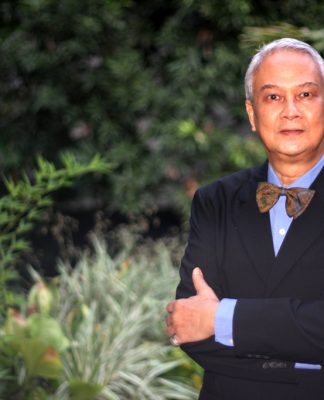THE DEPARTMENT of Education (DepEd) has expanded the learning areas for students under the K to 12 program in a bid to ensure a “seamless curriculum” from kindergarten to college.
Physical Education and Health was added to Language, Humanities, Communication, Mathematics, Philosophy, Natural Science, and Social Science as learning areas in the new senior high school core curriculum.
Aside from academic and technical-vocational livelihood specializations, Sports and Arts, previously taken as one track, was split into two: Sports, and Arts and Design.
DepEd K to 12 coordinator Elvin Uy said the senior high school curriculum was still a work in progress. DepEd will work toward integrated learning by coordinating with other institutions like the Commission on Higher Education and the Technical Education and Skills Development Authority, he said.
"DepEd ensures that the basic education curriculum is integrated and seamless not just within itself, but also with curricula or programs before kinder and after basic education. DepEd works with the various agencies and education stakeholders to ensure alignment and coherence of our curricula," Uy told the Varsitarian in an email.
Local languages
More languages were also added as part of the mother tongue-based education in primary school.
Tausug, Bikol, Cebuano, Chavacano, Hiligaynon, Iloko, Kapampangan, Maguindanaoan, Maranao, Pangasinense, Tagalog, and Waray were the initial 12 local languages in the curriculum. Seven were added: Ybanag, Ivatan, Sambal, Aklanon, Kinaray-a, Yakan, and Surigaonon.
Uy said DepEd planned to include more dialects in the future, but not in academic year 2014-2015.
Republic Act 10533, or the Enhanced Basic Education Act of 2013, requires kindergarten and 12 years of basic education, covering six years of primary education (Grades 1-6), four years of junior high school (Grades 7-10), and two years of senior high school (Grades 11-12) where students are to choose tracks related to the courses they want to pursue in college.
The K to 12 scheme was signed by President Benigno Aquino III on May 15, 2013 while the law's implementing rules and regulations were approved on September 2013.
K to 12 curricula for primary and secondary education are being implemented in two phases. The new programs for Grades 3 and 9 will be introduced in academic year 2014-2015.
‘Necessary change’
Marishirl Tropicales, UST High School principal, said that with the revised K to 12 curriculum, there would be better opportunities for students to have meaningful learning experiences.
“The K to 12 Curriculum, although still a work in progress, for me is a necessary change to strengthen the educational system in our country. With it, we could be at par with other countries in terms of providing relevant and quality education to our students that will prepare them for college or the world of work,” she said in an email to the Varsitarian.
UST High School plans to follow the academic track in its senior high school program. The gradual implementation of the K to 12 program at the UST High School began in school year 2012-2013 with the introduction of Grade 7.
The school will conduct seminars and training sessions aimed at continuously developing faculty members, and review and update curricular maps and other learning materials during the transition period, Tropicales said.
Tablets were also pilot-tested as tools for learning in four sections of Grade 7. Aside from introducing new technology, the schohol has also tied up with Hopkins International in administering the TOEFL junior test and other measures to strengthen students’ reading, listening, speaking, and writing skills.














